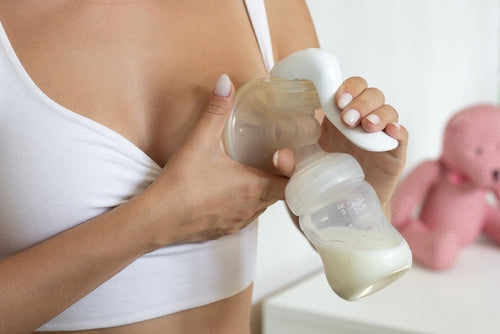
How to Wean off Pumping Without Getting Mastitis
Transitioning away from pumping can be a significant milestone for many breastfeeding moms. If you fall into this category, you likely know what we mean.
Whether it's due to returning to work, your baby starting solids, or simply feeling ready to wean off pumping, it can be a tedious process that requires careful consideration to avoid discomfort and potential complications like engorgement, mastitis, or clogged ducts.
Here's a quick guide to help you navigate this transition smoothly and comfortably. Just remember, you’ve got this!
Understanding the Weaning ProcessBefore diving into the steps of weaning off pumping, it's essential to understand the mechanics of lactation. When you breastfeed or pump milk, your body receives signals to continue producing milk to meet the demand.
This means that abruptly stopping pumping can confuse your body, leading to engorgement, clogged ducts, and even mastitis—a painful condition of the breast often caused by inflammation.
As a result, you can find yourself with a lot of tenderness and pain.
Proven Tips for Weaning SuccessfullyThe key to a comfortable weaning process is gradual transition and taking advantage of an anti-inflammatory cabbage breast cream like CaboCréme. By shortening pumping sessions, increasing the intervals between pumping, and applying CaboCreme to decrease engorgement, you can effectively wean without getting the dreaded mastitis.
Here's how to do it effectively:
-
Shorten Each Pumping Session: Start by gradually reducing the duration of your pumping sessions. If you typically pump for 20 minutes, aim to decrease it by about 25% every four to five days. For instance, begin with 15-minute sessions, then reduce to 11 minutes, and so on. Alternatively, if you measure your pumping by volume, decrease the amount pumped by 25% every few days.
-
Increase the Time Between Pumping Sessions: Adjust your pumping schedule by gradually increasing the intervals between sessions. Every three or four days, add an extra hour between pumping sessions. This extended time between sessions signals your body to decrease milk production gradually. If waiting becomes uncomfortable, use CaboCréme to relieve fullness in between pumping sessions.
-
Eliminate Pumping Sessions Gradually: As you extend the time between sessions, start eliminating some of your pumping sessions one at a time. Begin with the least essential session and gradually remove others as your body adjusts to less frequent pumping. Most women find it easier to eliminate evening sessions first, as milk production is typically lower during this time. When a pumping session is dropped, apply CaboCréme instead of pumping.
- Listen to Your Body: Throughout the weaning process, pay close attention to your body's signals. If you experience discomfort or signs of engorgement, adjust your pumping schedule accordingly. The process may take super producers longer. Another thing to keep in mind is that as long as you’re pumping, your body is given signals to continue making milk. The milk production will slow but it will not stop completely until you stop pumping completely.
Remember, every woman's body is different, so it's essential to tailor the process to your individual needs. No one knows your body as well as you do.
Preventing Breastfeeding and Pumping Complications
The latest advice in the Academy of Breastfeeding Medicine Protocol #36 recommends using cold compresses as the best way to ease clogged ducts and reduce inflammation. Cold packs are now recommended over warm compresses for preventing mastitis and have been found to be more effective.
To help avoid mastitis, you can try simple things like applying cold compresses, wearing a supportive sports bra, and taking over-the-counter pain relievers. CaboCréme, can also help by naturally reducing inflammation and decreasing milk supply. In fact, recent studies are showing the link between cabbage extract and its calming effect on the breast microcirculation. Prepare early and have the right tools in your toolbox.
If all else fails and you’re a super producer, hand express or you’ve tried all of these things and you’re still getting uncomfortably full - remove a small amount of breast milk by hand or pump and continue with the above tips.
Final Thoughts on Weaning from Pumping
Weaning from pumping can bring a mix of emotions, like a sense of loss or sadness as you leave behind the closeness of breastfeeding. But remember, you’re still nourishing your little one with love through solid foods—just one of many beautiful transitions you'll experience together!
When you’re ready to wean from the pump, be prepared, make your schedule, have CaboCréme on hand, and be patient. The guidelines above will help you navigate the transition and decrease your chances of getting mastitis.
Remember, you're not alone—contact us at hello@cabocreme.com if you need help or guidance. We’re women helping women thrive, not just survive, and we’re here for you.




